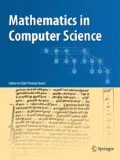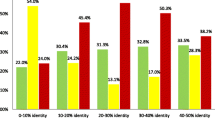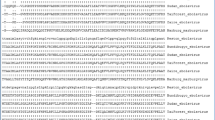Abstract
One of the major drawbacks of modern bioinformatics is the fact that protein similarity and blast searches are still based on primary amino acid sequence rather than structural data. Primary sequence searches are inadequate, as they fail to provide a realistic fingerprint for the query protein. Protein function is much more related to protein structure rather than to its amino acid sequence. After all structure is much more conserved than sequence in nature. In this direction and in an effort to bridge this flaw, a novel platform has been developed, which is capable of performing fast similarity searches using protein primary and secondary structural information. The protein secondary structure profile (PSSP) tool is capable of performing conventional blast searches, based on protein sequences, as well as alignments based on a custom made hydropathy substitution matrix that takes into account the physicochemical profile of the amino acids that compose the query protein. Moreover, PSSP is capable of efficiently exploiting protein secondary structural information from the PDB database when available. If the query protein is not indexed in the RCSB PDB database, it will automatically determine the secondary elements of the given protein by performing an ‘on the fly’ secondary structure prediction. All query proteins are then blasted against the RCSB PDB secondary elements database. Hits are scored, ranked and returned to the user via a well-organized and user friendly graphical interface.
Similar content being viewed by others
References
Allen, M.P., Tildesley, D.J.: Computer Simulation of Liquids, reprint edn. Oxford University Press, Oxford (1989)
Bond, S.D., Leimkuhler, B.J., Laird, B.B.: The NoséPoincaré method for constant temperature molecular dynamics. J. Comput. Phys. 151(1), 114–134 (1999)
Bowie, J.U., Reidhaar-Olson, J.F., Lim, W.A., Sauer, R.T.: Deciphering the message in protein sequences: tolerance to amino acid substitutions. Science 247(4948), 1306–1310 (1990)
Carvalho, C.S., Vlachakis, D., Tsiliki, G., Megalooikonomou, V., Kossida, S.: Protein signatures using electrostatic molecular surfaces in harmonic space. PeerJ 1, e185 (2013)
Chothia, C.: The nature of the accessible and buried surfaces in proteins. J. Mol. Biol. 105(1), 1–12 (1976)
Gill, P.E., Murray, W., Wright, M.H.: Practical Optimization. Academic Press, London (1982)
Gille, C.: STRAP: Structure based sequences alignment program. http://www.bioinformatics.org/strap/index2.html
Gille, C.: Molecular Operating Environment (MOE) (2013). http://www.chemcomp.com
Hekkelman, M.L., Te Beek, T.A., Pettifer, S.R., Thorne, D., Attwood, T.K., Vriend, G.: WIWS: a protein structure bioinformatics web service collection. Nucleic Acids Res. 38(Web Server issue), 719–723 (2010)
Hess, B., Kutzner, C., van der Spoel, D., Lindahl, E.: GROMACS 4: algorithms for highly efficient, load-balanced, and scalable molecular simulation. J. Chem. Theory Comput. 4(3), 435–447 (2008)
Hooft, R., Sander, C., Scharf, M., Vriend, G.: The pdbfinder database: a summary of pdb, dssp and hssp information with added value. Comput. Appl. Biosci. CABIOS 12(6), 525–529 (1996)
Kabsch, W., Sander, C.: Dictionary of protein secondary structure: pattern recognition of hydrogen-bonded and geometrical features. Biopolymers 22(12), 2577–2637 (1983)
Kamtekar, S., Schiffer, J.M., Xiong, H., Babik, J.M., Hecht, M.H.: Protein design by binary patterning of polar and nonpolar amino acids. Science 262(5140), 1680–1685 (1993)
Krissinel, E.: Enhanced fold recognition using efficient short fragment clustering. J. Mol. Biochem. 1(2), 76–85 (2012)
Kyte, J., Doolittle, R.F.: A simple method for displaying the hydropathic character of a protein. J. Mol. Biol. 157(1), 105–132 (1982)
Lampe, E., de Oliveira, J.M., Pereira, J.L., Saback, F.L., Yoshida, C.F., Niel, C.: Hepatitis G virus (GBV-C) infection among Brazilian patients with chronic liver disease and blood donors. Clin. Diagn. Virol. 9(1), 1–7 (1998)
Lefranc, M.P., Giudicelli, V., Ginestoux, C., Bodmer, J., Muller, W., Bontrop, R., Lemaitre, M., Malik, A., Barbie, V., Chaume, D.: IMGT, the international ImMunoGeneTics database. Nucleic Acids Res. 27(1), 209–212 (1999)
Pánek, J., Eidhammer, I., Aasland, R.: A new method for identification of protein (sub)families in a set of proteins based on hydropathy distribution in proteins. Proteins 58(4), 923–934 (2005). 03
Stewart, J.J.: MOPAC: a semiempirical molecular orbital program. J. Comput. Aided Mol. Des. 4(1), 1–105 (1990)
Sturgeon, J., Laird, B.: Symplectic algorithm for constant-pressure molecular dynamics using a Nosé–Poincaré thermostat. J. Chem. Phys. 112, 3474–3482 (2000)
Verlet, L.: Computer “Experiments” on classical fluids. I. Thermodynamical properties of Lennard–Jones molecules. Phys. Rev. Online Arch. (Prola) 159(1), 98–103 (1967)
Vlachakis, D., Tsagkrasoulis, D., Megalooikonomou, V., Kossida, S.: Introducing drugster: a comprehensive and fully integrated drug design, lead and structure optimization toolkit. Bioinformatics 29(1), 126–128 (2013)
Vlachakis, D., Tsagkrasoulis, D., Tsiliki, G., Kossida, S.: The future of structural bioinformatics in the post-genomic era. EMBnet.journal 18(1), 3–5 (2012)
Vlachakis, D., Tsaniras, S.C., Feidakis, C., Kossida, S.: An in silico 3D study of the biglycan core protein, using homology modelling techniques. J. Mol. Biochem. 2(2), 85–93 (2013)
Vlachakis, D., Tsiliki, G., Tsagkrasoulis, D., Carvalho, C.S., Megalooikonomou, V., Kossida, S.: Speeding up the drug discovery process: structural similarity searches using molecular surfaces. EMBnet.journal 18(1), 6–9 (2012)
Vriend, G.: WHAT IF: a molecular modeling and drug design program. J. Mol. Graph. 8(1), 52–56 (1990)
Xiong, H., Buckwalter, B.L., Shieh, H.M., Hecht, M.H.: Periodicity of polar and nonpolar amino acids is the major determinant of secondary structure in self-assembling oligomeric peptides. Proc. Natl. Acad. Sci. 92(14), 6349–6353 (1995)
Author information
Authors and Affiliations
Corresponding author
Additional information
PSSP can be freely downloaded via our dedicated server system at: http://www.bioacademy.gr/bioinformatics/.
PSSP is an open source, cross platform application available freely to all users under a GNU license basis. The full package, including installation scripts, figures, a full description and a detailed manual can be downloaded from the PSSP website. Prior to download; check the provided information on the website about software prerequisites. Please email comments and bug reports at dvlachakis@bioacademy.gr.
Rights and permissions
About this article
Cite this article
Vlachakis, D., Armaos, A. & Kossida, S. Advanced Protein Alignments Based on Sequence, Structure and Hydropathy Profiles; The Paradigm of the Viral Polymerase Enzyme. Math.Comput.Sci. 11, 197–208 (2017). https://doi.org/10.1007/s11786-016-0287-8
Received:
Revised:
Accepted:
Published:
Issue Date:
DOI: https://doi.org/10.1007/s11786-016-0287-8




